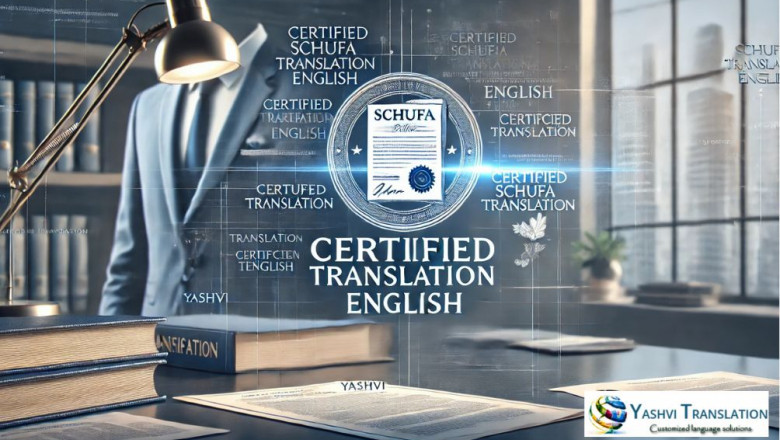views
Digital vs. Physical Certified Schufa Translations – Which Format is Accepted
When dealing with financial or legal matters in Germany, a Schufa report (Schufa-Bonitätsauskunft) plays a crucial role. Whether you're applying for a rental property, securing a loan, or establishing creditworthiness, having a Certified Schufa Translation English version is often required for international purposes. However, one pressing question remains: should you opt for a digital or physical certified Schufa translation? Which format is widely accepted? Let’s break it down.
Understanding Certified Schufa Translations
A Certified Schufa Translation English is a legally recognized translation of your Schufa report, typically done by a sworn or certified translator. This ensures that the translation is accurate and meets official standards required by banks, landlords, and other institutions.
Certified translations usually bear a stamp, signature, and certification statement, confirming the translator’s qualifications and the authenticity of the translation. Now, let’s explore the key differences between digital and physical certified translations.
Digital Certified Schufa Translation – Advantages & Acceptance
With the rise of digital documentation, many institutions now accept digital copies of certified translations. A digital certified Schufa translation is typically provided in a PDF format with an electronic signature and stamp from a certified translator.
Advantages of Digital Certified Translations:
- Faster Processing – You receive the translation quicker via email.
- Cost-Effective – No shipping fees involved.
- Easy Storage & Access – You can store and send the file easily.
- Eco-Friendly – Reduces paper usage.
- Global Accessibility – Perfect for online applications and international transactions.
Where Are Digital Certified Translations Accepted?
- Banks & Financial Institutions – Some banks accept digital copies if they come with an electronic signature.
- Online Rental Applications – Many landlords accept digital documents for the initial screening.
- Visa & Immigration Offices – Some embassies and immigration departments accept digital versions but may request a physical copy as well.
- Online Job Applications – Employers may accept digital certified translations during recruitment.
However, acceptance policies vary, and it’s always best to check with the institution before submitting a digital certified Schufa translation.
Physical Certified Schufa Translation – When Do You Need a Hard Copy?
A physical certified translation is a printed and signed copy of the Schufa report translation, usually sent via post. It carries an original stamp and signature, ensuring its authenticity.
Advantages of Physical Certified Translations:
- Universally Accepted – Physical copies are accepted by all institutions.
- Ideal for In-Person Submissions – Some organizations require hard copies with original signatures.
- More Traditional & Trustworthy – Some officials still prefer paper documentation.
- Legal Certainty – Less risk of rejection due to digital format concerns.
Where Are Physical Certified Translations Required?
- Notaries & Government Offices – When dealing with legal matters, courts, and public authorities.
- Visa & Immigration Applications – Some countries require original certified documents.
- Mortgage & Loan Applications – Some financial institutions request physical copies.
- Apartment Leases – Landlords may prefer physical certified translations.
Which Format Should You Choose?
The choice between digital and physical certified Schufa translations largely depends on who is requesting the document. Here are a few best practices to ensure a smooth submission:
- Check Requirements in Advance: Always ask the institution whether they accept digital copies or require a physical certified translation.
- Have Both Formats Ready: If unsure, order both a digital and physical version for flexibility.
- Ensure Proper Certification: Whether digital or physical, the translation must be done by a certified translator and include a seal and signature.
- Consider Expedited Services: If you need a physical copy urgently, check if the translator offers express shipping options.
Final Thoughts
Both digital and physical Certified Schufa Translation English formats have their own advantages, but acceptance depends on the institution or organization requesting the document. Digital versions are gaining widespread recognition, particularly for online transactions, while physical copies remain the gold standard for legal and governmental processes.
Before choosing, always verify the exact requirements of your recipient to avoid delays. Whether you opt for a digital or physical certified Schufa translation, ensuring it is accurately translated and officially certified is the key to hassle-free submissions.














Comments
0 comment